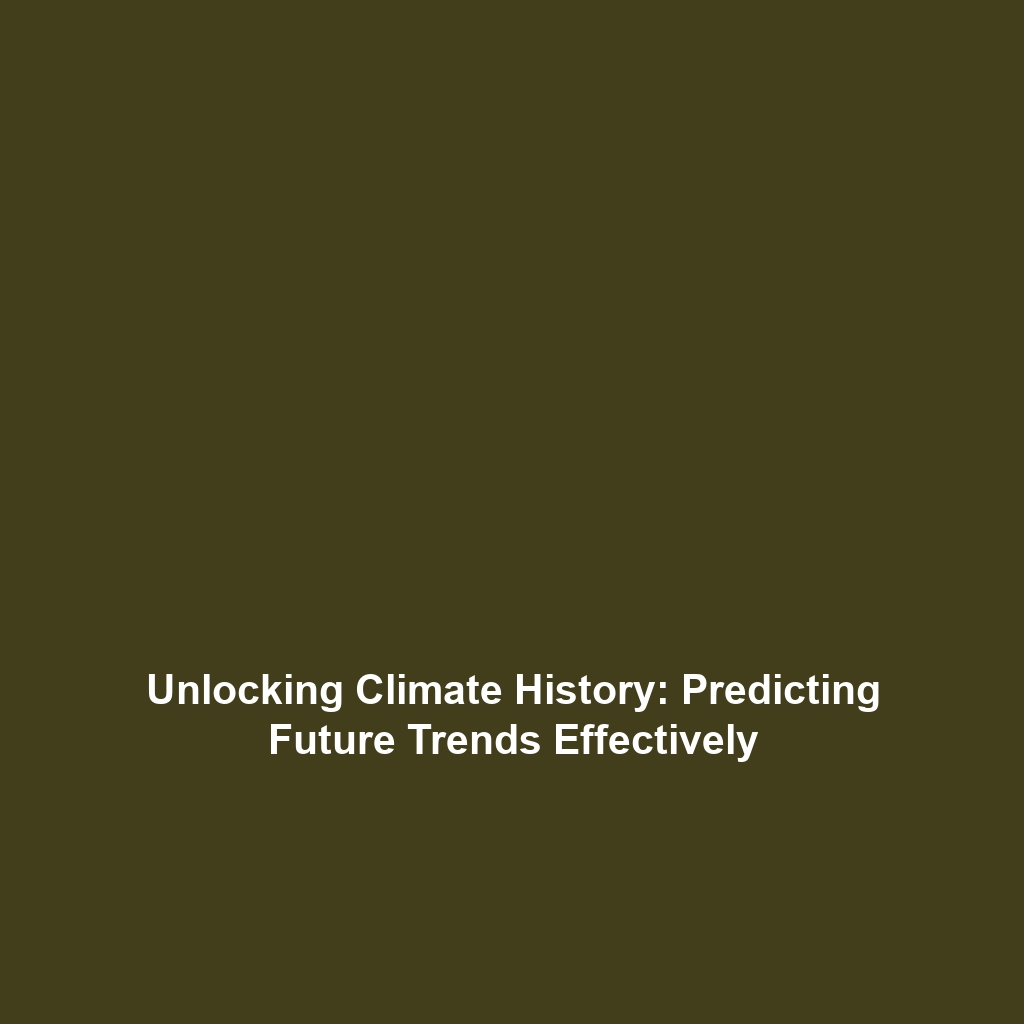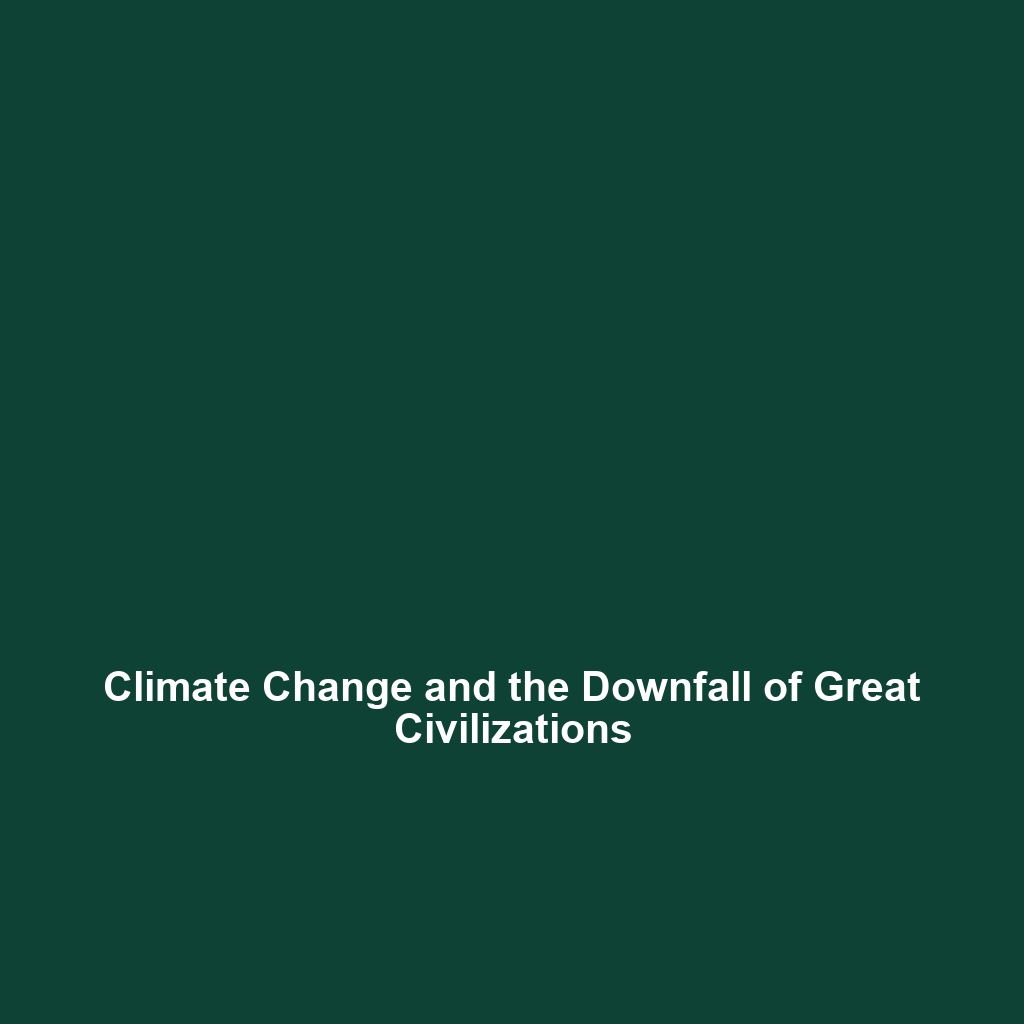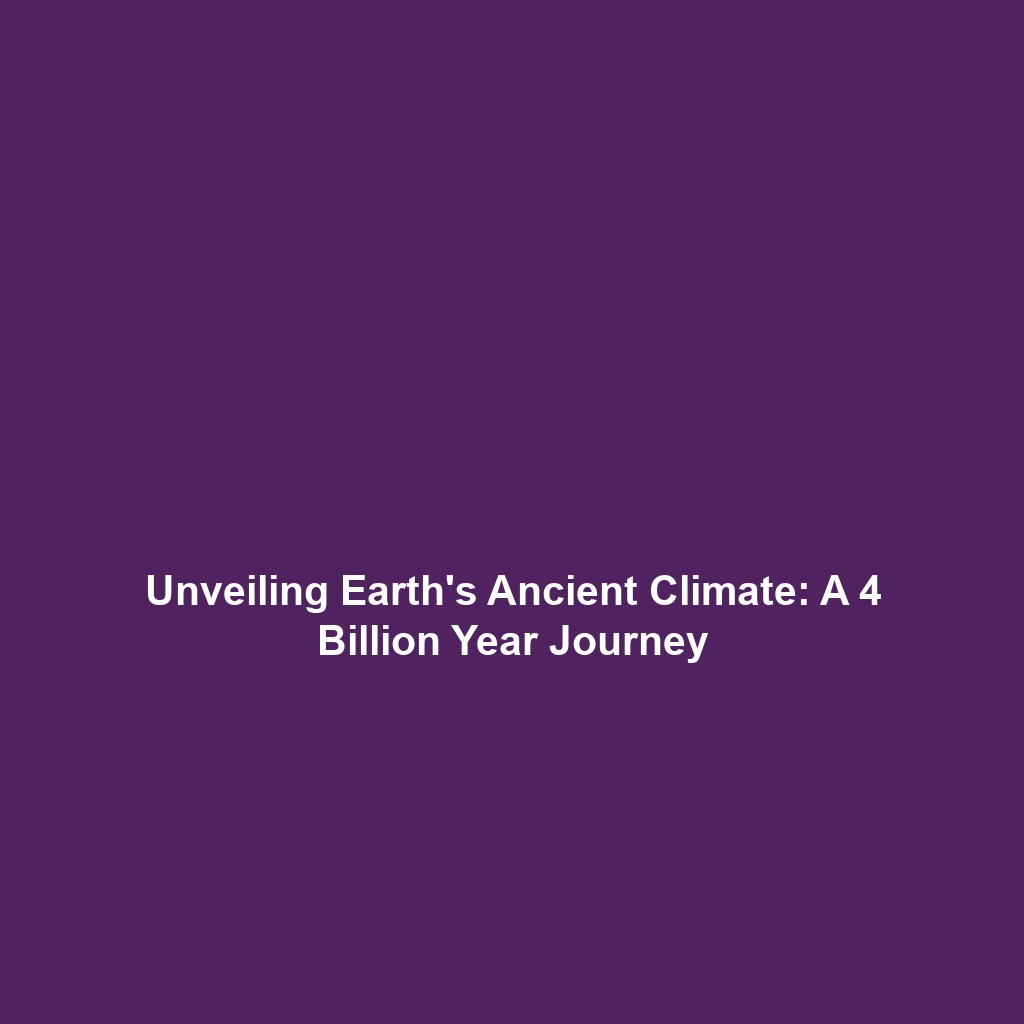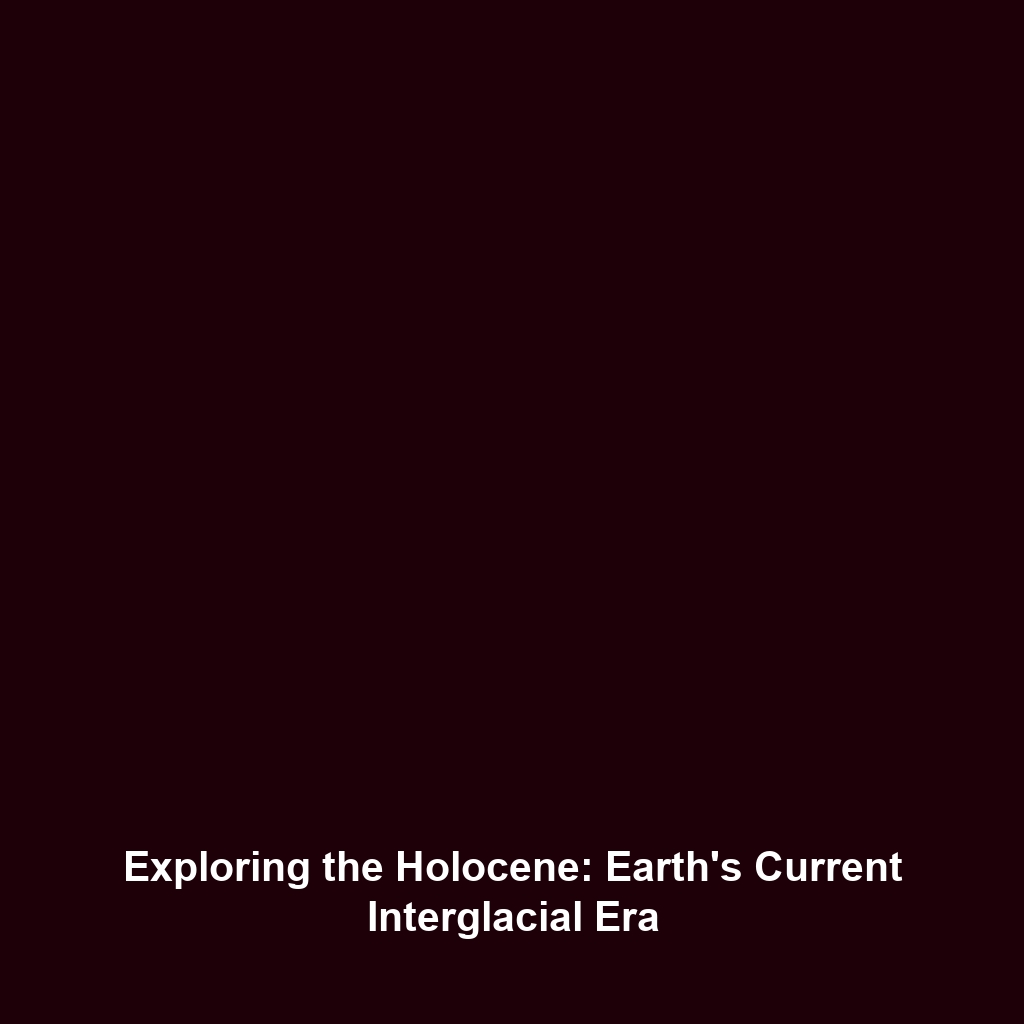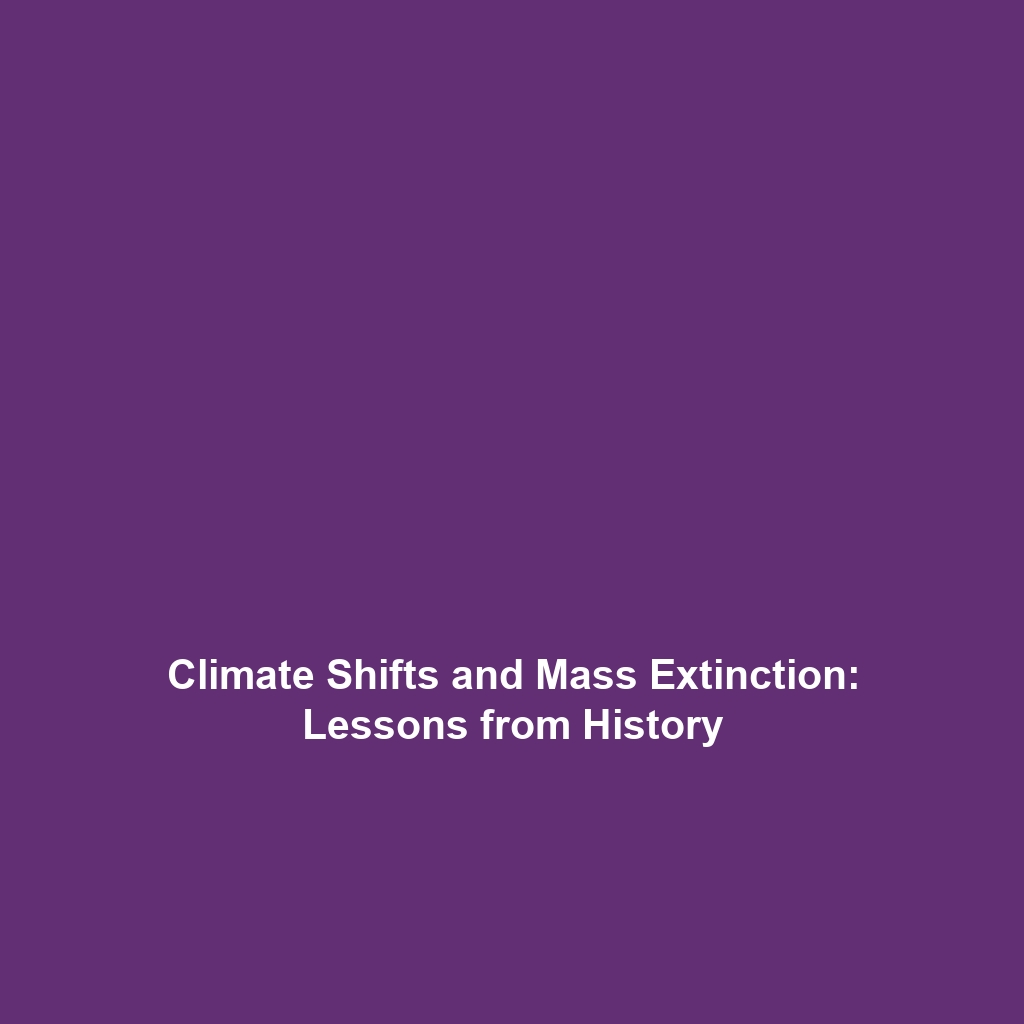Understanding Past Climate Changes: A Key to Future Climate Trends
The importance of understanding past climate changes is paramount for predicting future trends and informing ongoing discussions on climate change. As the planet faces unprecedented environmental challenges, analyzing historical climate data offers essential insights into the mechanisms of climate variability and stability. This article explores how this understanding integrates into Climate History, emphasizing its significance for present and future scenarios.
Key Concepts
Understanding past climate changes encompasses several major concepts, including:
- Proxy Data: Tools like ice cores, tree rings, and sediment layers offer invaluable records of historical climate conditions.
- Climate Models: Advanced simulations help scientists predict future climate changes based on historical data.
- Comparative Analysis: Evaluating past climate events, such as glacial and interglacial periods, aids in comprehending current climate dynamics.
These principles are central to Climate History, as they allow researchers to draw connections between historical patterns and modern trends, facilitating a deeper understanding of global climate systems.
Applications and Real-World Uses
Understanding past climate changes provides significant real-world applications, particularly within Climate History. Examples include:
- Policy Development: Insights from historical data inform climate policies aimed at mitigating future climate risks.
- Disaster Preparedness: Historical models predict responses to changing climate conditions, thereby enhancing community preparedness for climate-related disasters.
- Agricultural Planning: Knowledge of past climate conditions aids in developing resilient agricultural practices suitable for future climate scenarios.
Current Challenges
While the study of past climate changes offers valuable insights, several challenges persist:
- Data Limitations: Availability and accuracy of historical climate data can hinder comprehensive analysis.
- Model Complexity: Climate models can be intricate, making predictions uncertain.
- Public Misunderstanding: Misinterpretation of data may lead to public apathy regarding climate issues.
Future Research and Innovations
Looking ahead, ongoing research promises to enhance our comprehension of past climate changes and their implications:
- Remote Sensing Technologies: Innovations in satellite imagery and remote sensing are set to improve data collection and analysis, providing clearer perspectives on climate dynamics.
- Big Data Analytics: Leveraging big data is expected to revolutionize climate modeling, enabling more accurate forecasts based on historical patterns.
- Interdisciplinary Approaches: Collaborations across multiple scientific fields will yield holistic understandings of climate systems.
Conclusion
Understanding past climate changes is crucial for predicting future trends and influencing discussions on climate change. This knowledge enriches Climate History and offers tools for mitigating risks associated with climate variability. As we move forward, continuous research and innovation will further enhance our understanding, equipping us with the necessary insight to address one of humanity’s most pressing challenges. For further exploration, consider reading more about Climate Models and the Impacts of Climate Change.
